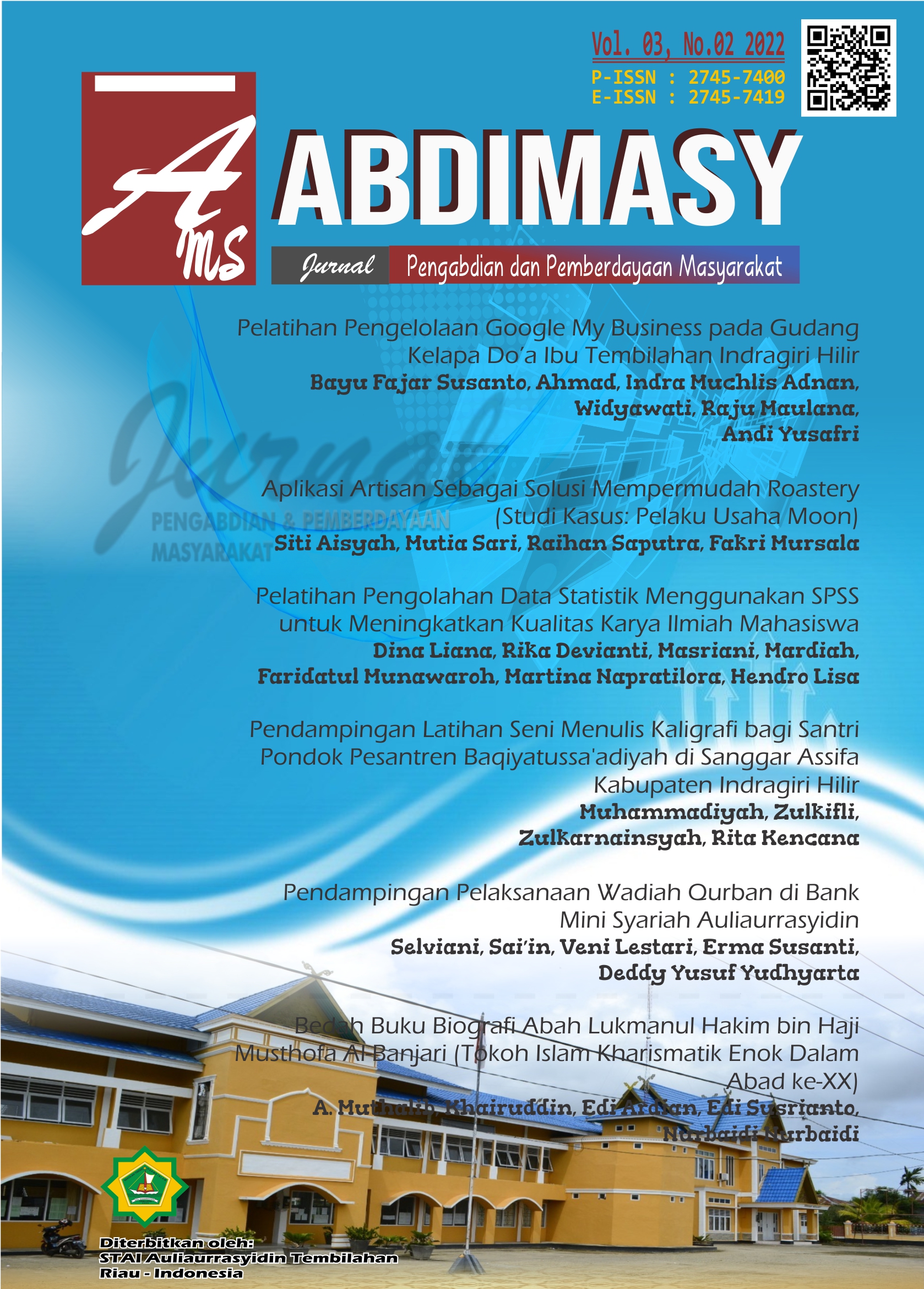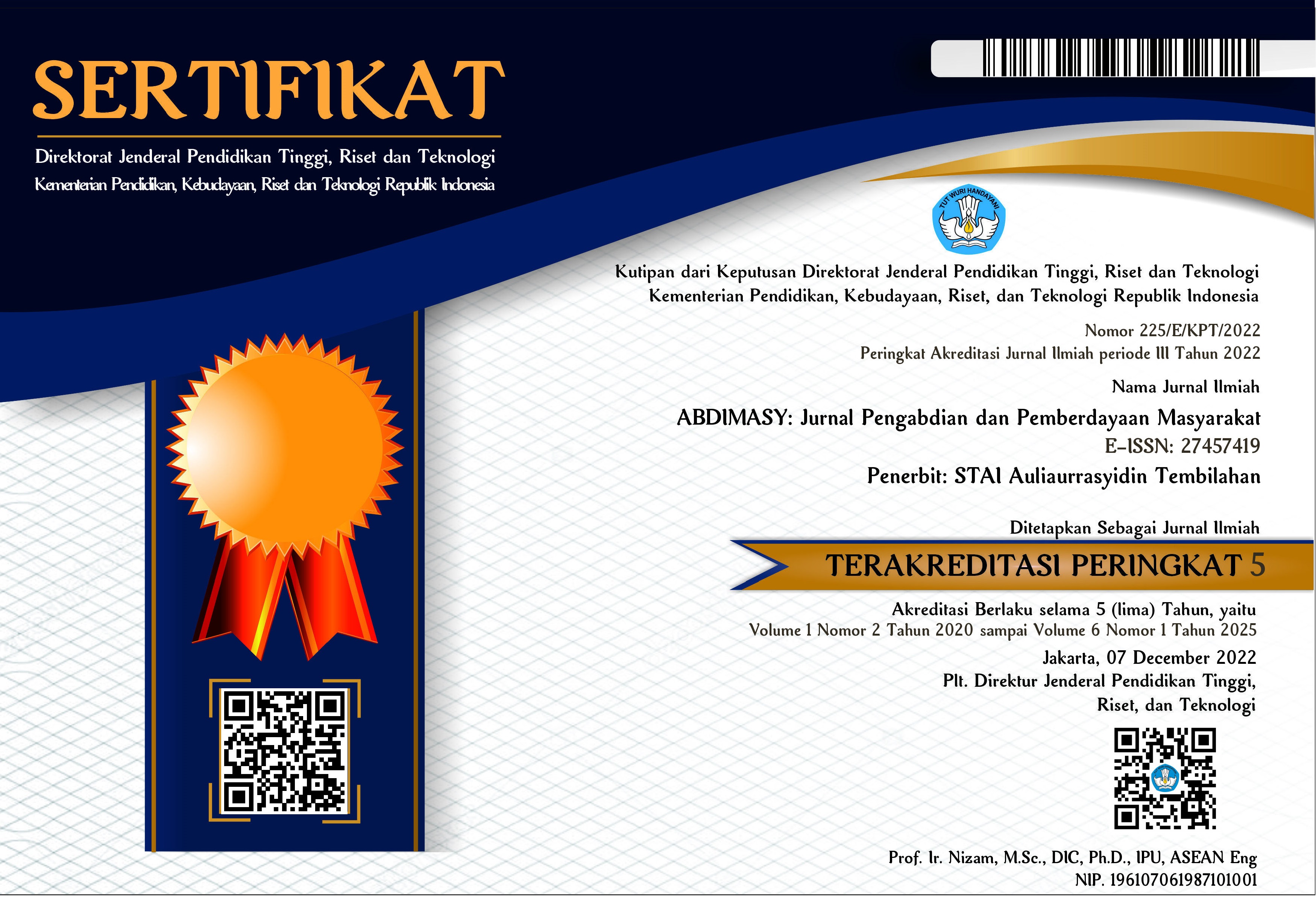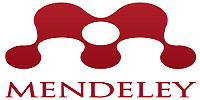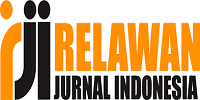Bedah Buku Biografi Abah Lukmanul Hakim bin Haji Musthofa Al-Banjari (Tokoh Islam Kharismatik Enok Dalam Abad ke-XX)
DOI:
https://doi.org/10.46963/ams.v3i2.702Keywords:
History, Lukmanul Hakim Bin Haji Mustofa Albanjari , BiographyAbstract
Talking about the history of a scholar (Islamic figure) in this country always attracts attention from various groups to be studied and studied further, in order to take lessons from the sides of his life to be emulated, imitated or emulated in our families and communities wherever they are, because Scholars are heirs of the Prophets. The history of Abah Lukman can be summarized as follows: Abah Lukmanul Hakim was a Ulama from the land of Banjar who had studied Islam in the holy city of Mecca and then after he returned to Indonesia then madam (wandered) to Indragiri Riau around 1914. Abah Lukmanul Hakim had studied with Mr. Sapat in Hidayat Village. At that time Abah lived in Tekulai Hilir. He was one of the special students when he studied at Hidayat, because in general he had studied the books studied in the village when he was in Mecca, but he wanted to take "blessings" from the descendants of Sheikh Muhammad Arsyad Al-Banjari who was famous in Tanah Banjar, a Ulama. Besar who authored the book "Sabilal Muhtadin", then after Tuan Guru Sapat died in 1939 Abah Lukman moved to Enok Dalam; Abah Lukmanul Hakim is someone who is consistent (consistent) in carrying out Islamic law; The legal basis for Abah Lukmanul Hakim being allowed to keep dogs for his community members at that time was to guard the coconut plantations, so that all the plants in their gardens were protected from pests such as pigs, monkeys and so on; Abah Lukmanul Hakim in the eyes of the people is a pious person. The heirs (sons and daughters) of Abah Lukmanul Hakim until this booklet was written, two people are still alive, namely: 1. Hj. Saibah and 2. Asy'ari, While in general there are still many grandchildren and they are scattered in several provinces in Indonesia such as: Jakarta, South Kalimantan, North Sumatra, Batam, Riau Islands, however, they mostly live in the Indragiri Hilir region of Riau, such as in Kec. Enok, Kec. Tempuling, Echo, Keteman (Scissors), and Kempas.
Downloads
References
Abdul Muthalib (A. Muthalib), Tuan Guru Sapat, Kiprah dan Perannya dalam Pendidikan Islam di Indragiri Hilir Riau pada Abad XX, (Eja Publisher: Yogyakarta) terbitan ke mpat Februari 2021,
--------------, Syekh Abdurrahman, Pak Uan Sungai Pinang Kuala Enok, Figur Pejuang Pendidikan Islam pada Pertengahan Abad ke- XX (1957-1975), Sakata Cendia Ciputat, cetakan I, September 2019
Al-Qur’an, Al-Hadis, Jurnal: Peradaban dan Pemikiran Islam, Vol. 3, No. 2, Desember 2019
Azyumardi Azra, Jaringan Ulama Timur Tengah dan Kepulawan Nusantara Abad XVIII. (Bandung: Mizan, 1994).
Dinawati, Hukum Kepemilikan Anjing menurut Imam Syafi’I (Studi Kasus Desa Belukar Kecamatan Rundeng Kota Subulussalam Aceh), 2019 M./1440 H.
Komunika, Vol . 9, No. 1.Januari-Juni 2015, Kesehatan Al-Irsyad, Vol. XI. No. 2, September 2018.
Koran: Republika, Kamis, 10 Desember 2020
Poskota: Berilah Kail, Jangan Ikannya, Kamis, 5 November 2020.
Wawancara penulis dengan putra Abah Lukman, Asy’ari , Wawancara penulis dengan putri Abah Lukman, Hj. Saibah, Wawancara dengan Cucu Abah Lukman, H. Jailani Wawancara penulis dengan murid Abah Lukman, Darkasi, Wawancara penulis dengan murid Abah Lukman, Jambi
Downloads
Published
Issue
Section
License
Copyright (c) 2022 A. Muthalib, Khairuddin Khairuddin, Edi Ardian, Edi Susrianto, Nurbaidi Nurbaidi

This work is licensed under a Creative Commons Attribution-ShareAlike 4.0 International License.
Authors who publish with this journal agree to the following terms:
1. Copyright on any article is retained by the author(s).
2. The author grants the journal, right of first publication with the work simultaneously licensed under a Creative Commons Attribution shareAlike 4.0 International License that allows others to share the work with an acknowledgment of the work’s authorship and initial publication in this journal.
3. Authors are able to enter into separate, additional contractual arrangements for the non-exclusive distribution of the journal’s published version of the work (e.g., post it to an institutional repository or publish it in a book), with an acknowledgment of its initial publication in this journal.
4. Authors are permitted and encouraged to post their work online (e.g., in institutional repositories or on their website) prior to and during the submission process, as it can lead to productive exchanges, as well as earlier and greater citation of published work.
5. The article and any associated published material is distributed under the Creative Commons Attribution-ShareAlike 4.0 International License





2.png)



